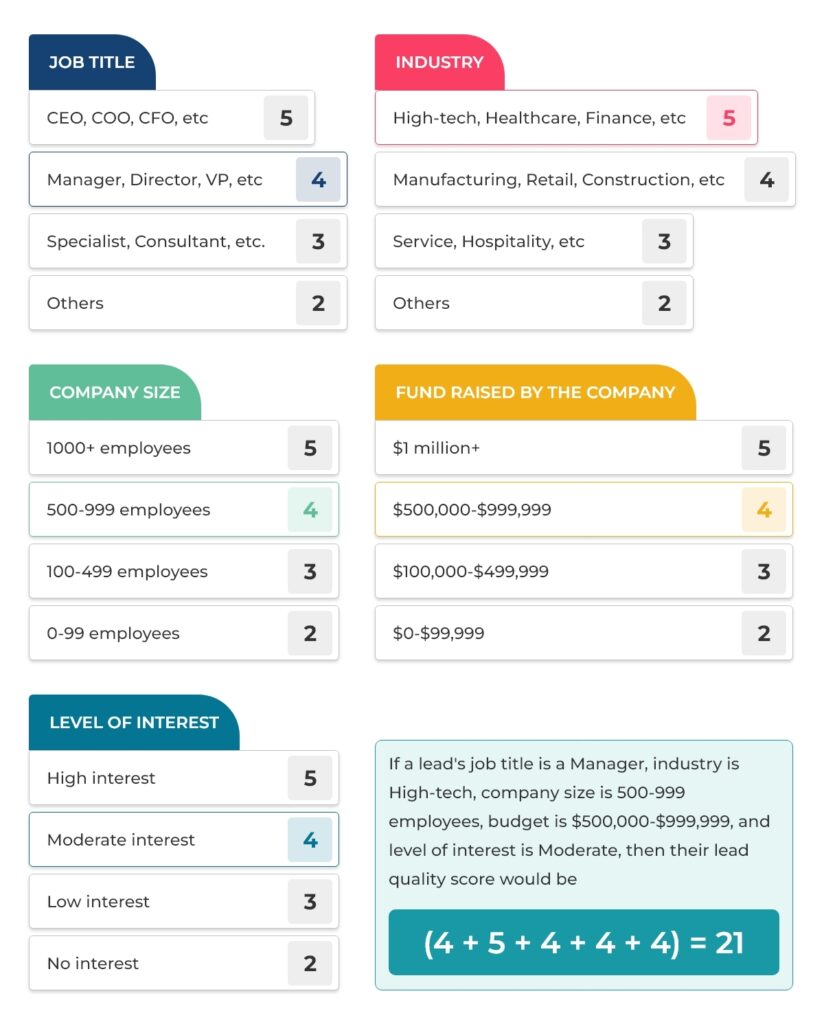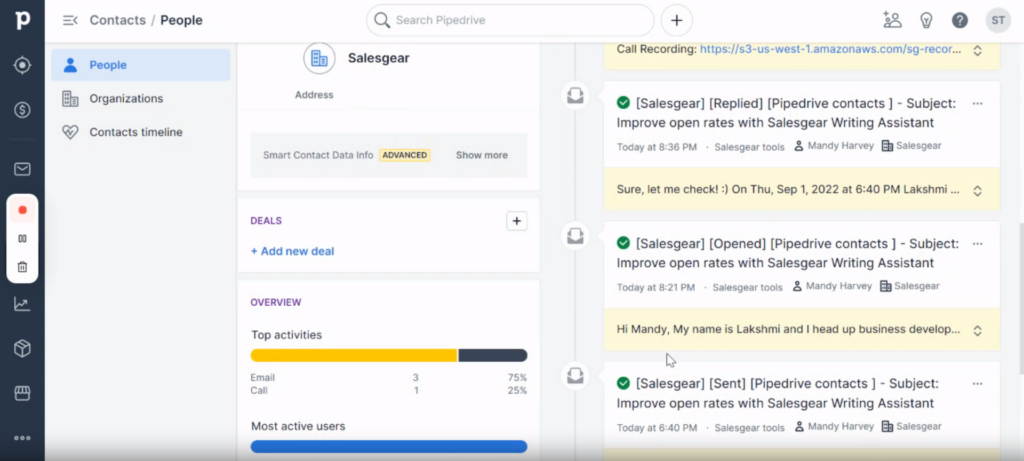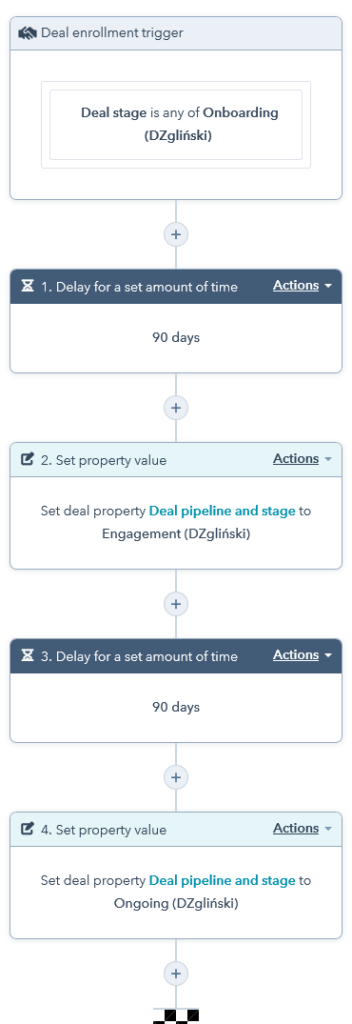
Did you know that 63% of B2B sales managers or leaders do not know how to effectively manage a sales pipeline?
That’s right, keeping track of leads, deals, and forecasts can feel like trying to solve a Rubik’s cube blindfolded.
And to make things worse, only 22% of salespeople are happy with the quality of the data in their CRM.
This means that the data in the CRM is inaccurate or incomplete and important information about leads and deals can slip through the cracks, making it harder for sales teams to close deals and hit their targets.
And a sales manager never wants this to happen to their sales team for sure!
In this article, let’s talk about how to effectively manage a sales pipeline, how to overcome the common obstacles, and best practices to take full control of your pipeline.
Let’s unleash the full potential of your sales team! 🚀
8 best practices on how to effectively manage a sales pipeline
1. Prioritize hot leads only
You know that feeling when your inbox is flooded with emails and you have no idea where to start?
That’s how salespeople can feel when they have a pipeline full of leads, but no clear direction on which ones to prioritize.
The truth is, not all leads are created equally. Some may be ready to buy, while others are just browsing.
It’s all about prioritizing hot leads over cold ones.
But how do you determine which leads are hot?
One way is to use lead scoring, where you will assign a score to each lead based on their behavior and engagement with your product.
Here’s an example –

Remember, it’s always quality over quantity.
Having a pipeline of just 2 hot leads who are more likely to convert is much better than having a pipeline of, say 100 dead-end leads.
2. Implement a standard sales process
As a sales manager, it’s important to ensure that your sales team has a consistent sales process in place.
Why?
With so many leads to follow up on, deals to close, and targets to meet, it’s easy for things to get disorganized and lose track of what needs to be done.
According to Harvard Business Review, sales forces were most effective at managing their sales pipelines if they had invested time in defining a credible, formalized sales process.
There was an 18% difference in revenue growth between companies that defined a formal sales process and companies that didn’t.
Therefore, a streamlined and consistent sales process is definitely necessary to –
- Ensure that everyone is following the same steps to move leads through the pipeline
- Reduce the risk of important tasks being missed
- Identify areas where the process can be improved
- Train new salespeople more quickly and effectively
Make sure to define every stage of the process clearly. Don’t forget to automate and use the tools that make your sales process & day better!
Of course, it’s important to remember that the sales process isn’t set in stone.
You should always be looking for ways to improve it and make it more effective.
But by starting with a standard process that everyone follows, you’ll be able to build a solid foundation for your sales success.
3. Automate SEP + CRM workflow
Fact: Sales can be a bit of a juggling act.
Between following up with leads, tracking deals, and keeping everyone on the same page, it’s easy for things to slip through the cracks.
But the good news is that over 70% of these manual and redundant tasks can be automated.
You should streamline the workflow between your Sales Engagement Platform and CRM to reduce the time spent on admin tasks and free up more time for selling.
With a seamless integration between these two tools, you can easily have your CRM updated with the accurate information without any manual effort on your part, ensuring a healthier pipeline.
Moreover, you can send automated follow-ups at the right time, schedule appointments, and track engagement of your prospects – all from your CRM.
Ideally, CRM must be the place where you and every SDR/AE in your team should look for any prospect information.

4. Have your sales cycle short
It is crucial to have your sales cycle short because time is money and the longer you take to close a deal, the more resources you will have to dedicate to that specific lead.
It is better not to have longer sales cycles because your prospect might be in a buying state but if you are bombarding them with irrelevant information, they could get frustrated & lose interest in the product altogether.
So, how do you shorten your sales cycle?
Ensure that your team has all the necessary information they need to make informed decisions at each stage of the pipeline.
This means you should create a standardized process for lead qualification and disqualification, as well as provide training and resources to help your team move leads through the pipeline quickly and efficiently.
Consider automating specific parts of your sales process such as sending follow-up emails or scheduling appointments to save more time and increase productivity.
On the other hand, reducing your sales cycle length doesn’t mean you can send all your follow-ups in a single or over a span of 2 days.
You may try reducing the number of follow-up emails or change an email step to a social interaction where you engage with your prospects on social platforms.
5. Align sales and marketing
As a salesperson, you should know that pipeline management or success is not just about your individual efforts or just the sales team’s efforts.
Your marketing team plays a crucial role in generating inbound leads and creating awareness of your product.
However, if your sales and marketing teams aren’t aligned, it can lead to missed opportunities and lost revenue.
Picture this: Your marketing team creates an amazing campaign that attracts a flood of leads, but the sales team drops the ball by failing to properly qualify or follow up with those leads.
On the flip side, the sales team hustles to close deals, but without a strong marketing strategy to replenish the pipeline with fresh leads, they’re essentially swimming against the current.
But when sales and marketing are working in sync, you can expect to see higher quality leads, shorter sales cycles, and increased revenue growth.
You can also ensure that everyone is working towards the same goal of generating revenue and closing deals. This means that there is clear communication, shared goals and metrics, and a coordinated approach to nurturing leads and driving conversions.
So, if you’re not already working closely with your marketing team, it’s time to start building those bridges and collaborating for success.
6. Automate lead movement in the pipeline
Have you ever felt like you’re playing a game of hot potato with your leads? One minute they’re in your hands, and the next minute they’re dropped and forgotten.
You are doing this because you and your sales team handle leads manually and it is easy for everyone to forget things and let go of potential opportunities.
This is why you should ‘move leads with purpose’ across the pipeline.
Lead qualification should not just happen at the beginning of the pipeline, rather it should happen at every stage of your pipeline.
When you move the leads from one stage to the next with a purpose, you know that they are being handled with care and attention at every stage of the sales pipeline.
Moreover, automating this process can help you prioritize your hottest leads and move them through the pipeline more quickly, so you can close deals faster.
There are different names assigned for this automation in different CRMs. Here’s an example of how to effectively manage a sales pipeline by moving leads with purpose using HubSpot –

This example helps you move deals automatically from one stage to another after a specific amount of time which is 90 days in this case.
7. Analyze the only metrics that matter
When someone asks you, “how to effectively manage a sales pipeline”, one of the most important questions that you should ask back is “what are your sales pipeline metrics?”.
As a salesperson, it’s important to know which metrics to track in order to determine the health of your sales pipeline and make data-driven decisions to improve your performance. Here are some of the key metrics that you should be paying attention to –
- Lead-to-Opportunity – the percentage of leads that turn into opportunities
- Opportunity-to-Win – the percentage of opportunities that result in closed deals.
- Average Deal Size – the average value of a closed deal.
- Sales Cycle Length – the average amount of time it takes to close a deal.
- Win Rate – the percentage of deals that result in a win.
- Sales Velocity – the amount of revenue generated per day in the sales pipeline.
- Pipeline Coverage – the ratio of pipeline value to quota.
For example, if you notice that your lead-to-opportunity conversion rate is low, you may need to re-evaluate your lead qualification process, adjust your inbound or outbound strategies to find more qualified leads.
And if your sales cycle length is longer than expected, you may need to re-evaluate your sales process and identify ways to shorten it.
Having said that, there are a few more metrics to track too but you have to find the ones that’s helping you more in improving your pipeline management.
It’s better to track a few key metrics consistently and use that data to make informed decisions and drive improvements in your sales process.
8. Conduct weekly meetings
Schedule weekly meetings with your team to discuss pipeline management. These meetings provide an opportunity for your team to discuss any updates, roadblocks, or successes in the pipeline, as well as brainstorm new strategies for improvement.
During these meetings, you can discuss:
- Updates on deals that are currently in the pipeline
- New leads that have come in and need to be added to the pipeline
- Any challenges or roadblocks that are preventing progress
- Strategies for how to efficiently manage a sales pipeline
Scheduling weekly meetings also allows you to track progress over time and make adjustments to your sales process as needed. You can analyze data and identify trends to determine what is working and what needs to be improved.
These meetings don’t have to be long and drawn-out affairs. In fact, they can be as short as 15-20 minutes, but the key is to make them consistent and make sure everyone is present.
Suggested read: 20-minute breakdown of conducting a sales meeting
Final thoughts
Managing a sales pipeline may seem daunting at first, but with the right strategies and tools, it can be a piece of cake.
One of the most important things to keep in mind is pipeline hygiene – ensuring that your data is accurate, up-to-date, and prioritized.
Remember, the key is to track only the metrics that matter and make data-driven decisions based on that information.
With these practices in place, you can understand your pipeline’s strengths and weaknesses, identify areas for improvement, and optimize your sales process to drive better results.